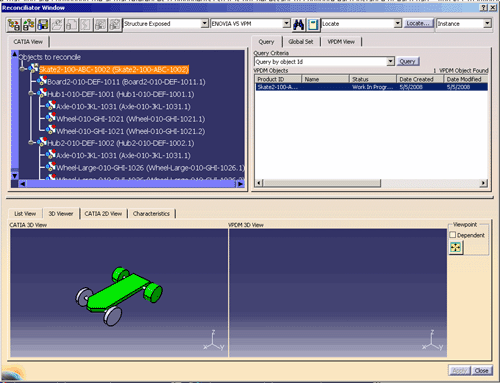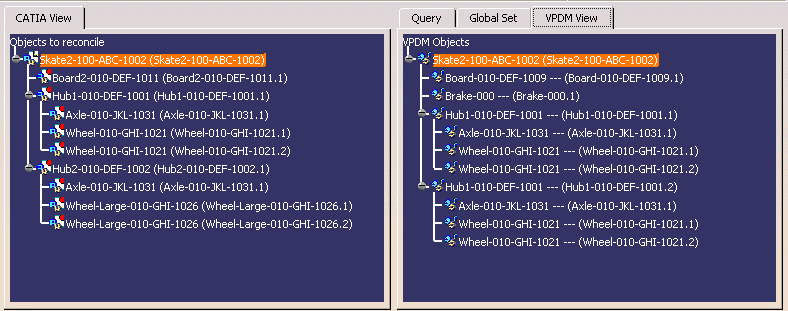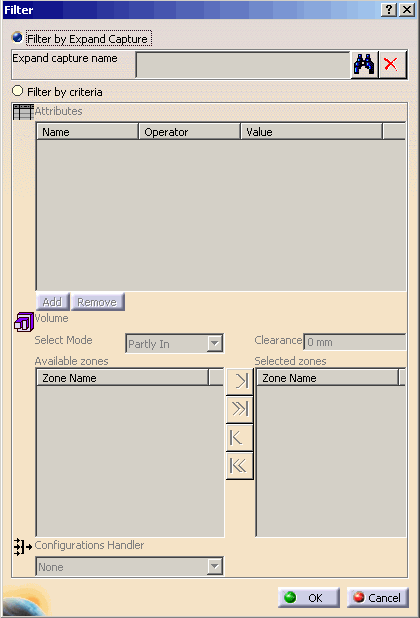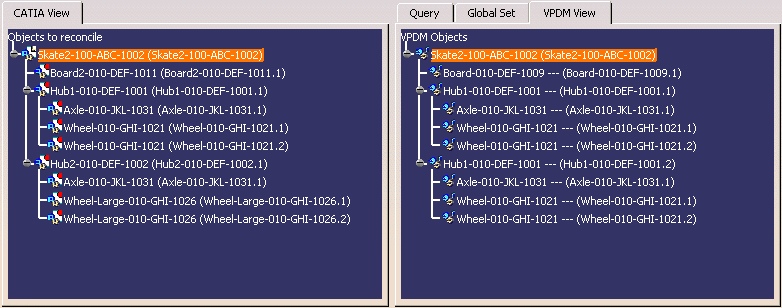|
 |
 |
|
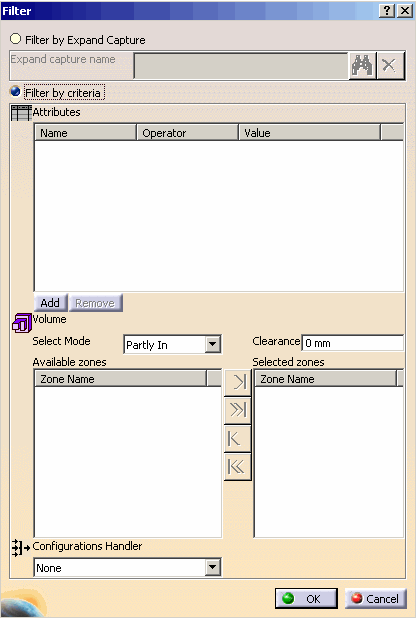 Click the Add button, to add Attribute criteria.
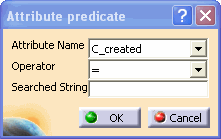 -
Choose the Attribute Name and Operator from the respective lists. Type a search string
in the Searched String box.
Click OK.
The search predicate is added to the attribute filter criteria.

-
To remove a predicate, select the row and click the
Remove button.
-
To add volume criteria, select from the
Available zones and enter the Mode and Clearance
information. Please see the VPM Navigator User
Guide > Basic Tasks > VPM Navigator > Filtering > Filtering by Volume
for more information on using volume filters.
-
To select the zones you want to filter with, select a
zone name in the Available zones list. Click >| to move
that zone into the Selected zones list. >>| will move
all the zones into the Selected zones list. Similarly,
to remove zones from the Selected zones list, select a Zone
Name and click |<. Clicking |<< removes all zones from the
Selected zones list.
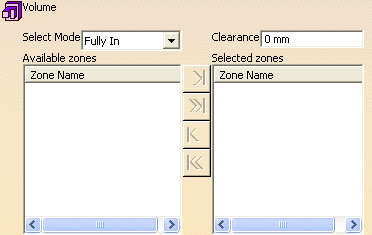
Please see the VPM Navigator User Guide > Basic
Tasks > VPM Navigator > Filtering > Filtering by Zone for more
information about volume filters.
-
To add configuration criteria,
select from the list of configuration handlers that have been
defined for the PRC. Configuration criteria can only be
defined using a configuration handler. Please see the VPM Navigator
User Guide > Basic Tasks > VPM Navigator > Filtering > Filtering by
Configuration for more information on configuration filtering and
configuration handlers.

|
![]()





